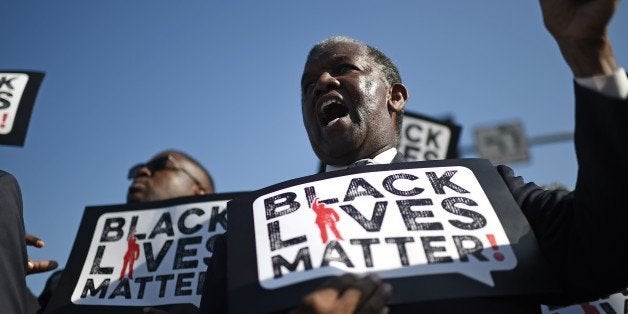
Sadly, the recent killings of Black men, women, and children by the police are fatal interactions in a long history of state violence. Police killings demonstrate the need for better law enforcement practices. These fatal interactions reinforce the need to reform policies that place Blacks under greater police scrutiny and lead to disadvantage throughout the criminal justice system.
A future for Black people in America must include a concept of public safety not defined by arrests, admissions to prison, or lengthy prison terms. Where we go from here requires new public safety priorities that scale back excessive prison sentences, prioritizes evidence-based interventions that reduce criminal justice involvement, and establishes community-level initiatives in high incarceration neighborhoods.
Ending Black disadvantage in the criminal justice system involves addressing admissions to prison and lengths of confinement.Congress and legislative bodies in almost every state have enacted laws -- mandatory minimums, "three strikes and you're out" policies which can result in a life sentence, and truth-in-sentencing provisions -- that send more people to prison and incarcerate them for longer periods of time. In addition, the share of prison admissions for persons who violate parole -- many for technical violations, not new crimes -- has doubled in recent decades from one is six in the 1980s to one in three today.
According to criminologist Michael Tonry, countries have the policies and prison populations they choose. Between 1965 and 1990, a period during which overall and violent crime rates tripled in Germany, Finland, and the United States, German politicians chose to hold the imprisonment rate flat, Finnish politicians chose to substantially reduce theirs, and American politicians generally enacted policies that sent more people to prison, along with lengthened prison terms.
Black defendants experience disadvantage due to policies and practices that disparately affect Blacks, including enhanced penalties in drug free school zones and recidivist sentencing enhancements. Disadvantage accumulating at each step of the process contributes to Blacks and Latinos comprising 56% of the incarcerated population, yet only 30% of the U.S. Population. If recent trends continue, one of every three black boys can expect to go to prison in his lifetime, as can one of every six Latino boys -- compared to one of every seventeen white boys. Smaller but still substantial racial and ethnic disparities also persist among women.
Studies show that harsh sentencing laws for certain offenses often have a disparate impact on Black defendants as a result of how sentencing laws interact with broader racial differences in our society and within the criminal justice system. A study of judicial practices in Pennsylvania found that young Black men were perceived to not have stabilizing social bonds like a supportive family or living wage employment. Consequently, Black male defendants were viewed as a risk to public safety, less reformable, and less likely to have suffered mitigating victimization. Research has reinforced the "high cost of being [B]lack, young, and male" and specifically the "continuing significance of race in American society."
The politics of Black Lives Matter offers an opportunity for a new public safety framework to emerge. To substantially reduce the prison population will require both state-specific strategies and federal reforms. The framework must be accountable to community concerns that prioritize direct engagement with justice involved persons and their families. Those concerns should inform changes in policy and practice to eliminate Black disadvantage at all levels of the justice system.
In order to achieve a broader approach to public safety we need to focus on substantial sentencing reforms and targeted interventions that reduce contact with the criminal justice system. First, we must scale back lengthy prison terms, even for more serious crimes. The 21-year-old former gang member convicted of robbery may be a very different person at age 30. Second, we must prioritize programs like the Nurse Family Partnership, a visitation program that has demonstrated that home visits can significantly reduce arrest rates for children and their mothers. Finally, we must focus resources to strengthen effective remedies in high incarceration communities. Research shows that a community-level approach can be effective at reducing crime both by creating opportunity and by enhancing informal social control mechanisms.
We'll know Black lives matter when public safety responses aren't defined by arrests or prison admissions but by work to reduce contact with the criminal justice system in the first place.
This post is part of the "Black Future Month" series produced by The Huffington Post and Black Lives Matter for Black History Month. Each day in February, this series will look at one of 28 different cultural and political issues affecting Black lives, from education to criminal-justice reform. To follow the conversation on Twitter, view #BlackFutureMonth -- and to see all the posts as part of our Black History Month coverage, read here.